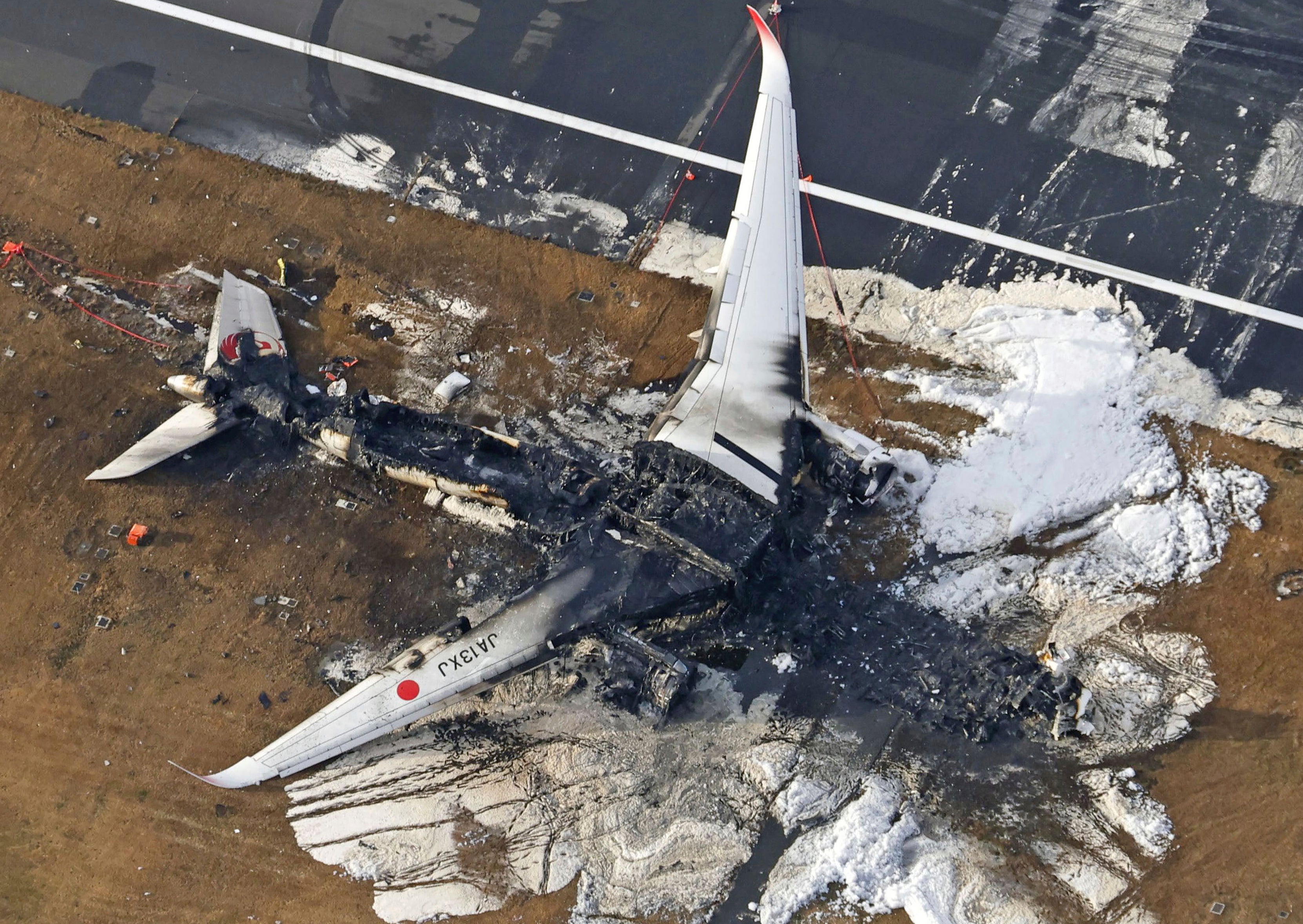Japan Coast Guard plane was not cleared for take-off before fatal Tokyo crash
Newly released transcript contradicts pilot’s account of getting take-off permission
Your support helps us to tell the story
From reproductive rights to climate change to Big Tech, The Independent is on the ground when the story is developing. Whether it's investigating the financials of Elon Musk's pro-Trump PAC or producing our latest documentary, 'The A Word', which shines a light on the American women fighting for reproductive rights, we know how important it is to parse out the facts from the messaging.
At such a critical moment in US history, we need reporters on the ground. Your donation allows us to keep sending journalists to speak to both sides of the story.
The Independent is trusted by Americans across the entire political spectrum. And unlike many other quality news outlets, we choose not to lock Americans out of our reporting and analysis with paywalls. We believe quality journalism should be available to everyone, paid for by those who can afford it.
Your support makes all the difference.The Japan Coast Guard plane that was involved in Tuesday’s deadly crash at Tokyo’s Haneda Airport was not cleared for take-off by air controllers, authorities have said.
The coastguard Bombardier Dash-8 was lined up on the runway for take-off when it was struck by a Japan Airlines Airbus A350 plane carrying hundreds of passengers.
Five members of the coastguard crew who were carrying out relief and rescue work at earthquake-hit areas in western Japan were killed, but all the passengers and crew from the JAL plane were miraculously evacuated.
Japanese transport minister Tetsuo Saito released a transcript on Wednesday of communications between the air traffic controllers and the two planes in the minutes before the accident.
The coastguard aircraft was told to “taxi to holding point C5” at 5.45pm local time, two minutes before the JAL plane struck it, according to the transcript.
Meanwhile, the air traffic control room cleared the JAL plane to land at 5.43pm.
The transcript appeared to conflict with the account provided by the pilot, who was the sole survivor of the coastguard plane. He has said that he received clearance to access the runway that the JAL airliner was approaching.
Tokyo police are investigating whether or not negligence caused the crash.

Mr Saito said that the incident is “still being investigated”.
“The transport ministry is submitting objective material and will fully cooperate with the ... investigation to ensure we work together to take all possible safety measures to prevent a recurrence,” he said.
Officials from the Japan Transportation Safety Board (JTSB), which is also carrying out an investigation in participation with French and British agencies that designed and manufactured the coastguard plane, said they have retrieved its flight and voice recorders.
According to records, another factor in the crash could be that the runway lights may have been out of service.
The runway stop bar lights are to prevent pilots from entering the active runway in the darkness.
A notice issued to pilots on Christmas Day said that stop bar lighting was “unserviceable” along taxiways C1 to C14. It included a taxiway where Haneda tower controllers instructed the coastguard flight to wait for take-off clearance. The notice, also known as NOTAM, is still in effect.

Audio of the incident posted on LiveATC.net, which tracks airport communications, showed that minutes before 6pm local time an unidentified voice can be heard saying: “We have a fire on runway 34R.”
Japan Airlines said it expected an operating loss of more than $100m (£78m) after its two-year-old Airbus A350 was destroyed in the crash.
The jet burst into flames after skidding down the runway and continued to burn for more than six hours.
However, all 367 passengers and 12 crew members were evacuated within 20 minutes, the airline said, in what has been praised as “textbook response”.
Pilots on the JAL plane were unaware of the fire when it first broke out and were informed by the crew members, a JAP spokesperson said.
The pilots said that they had no “visual contact” of the second plane although one of them spotted “an object” right before the collision, according to JAL.
“After the plane landed and around the time when the front wheels touched or were about to touch the ground, during those few seconds, they said they felt an impact,” the spokesperson said.

Join our commenting forum
Join thought-provoking conversations, follow other Independent readers and see their replies
Comments